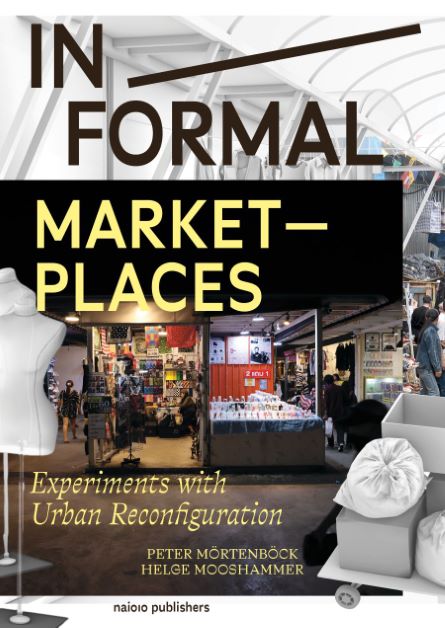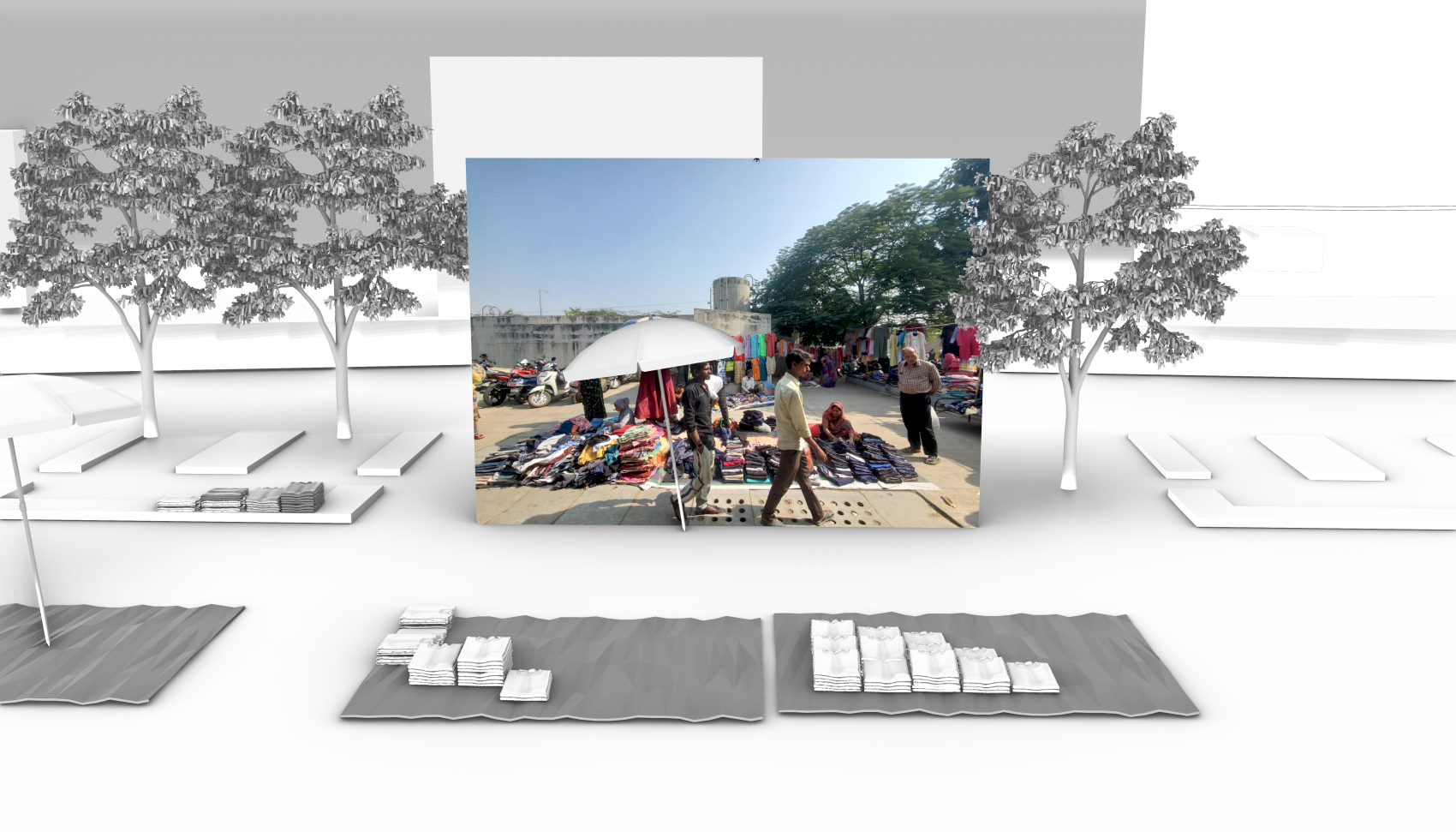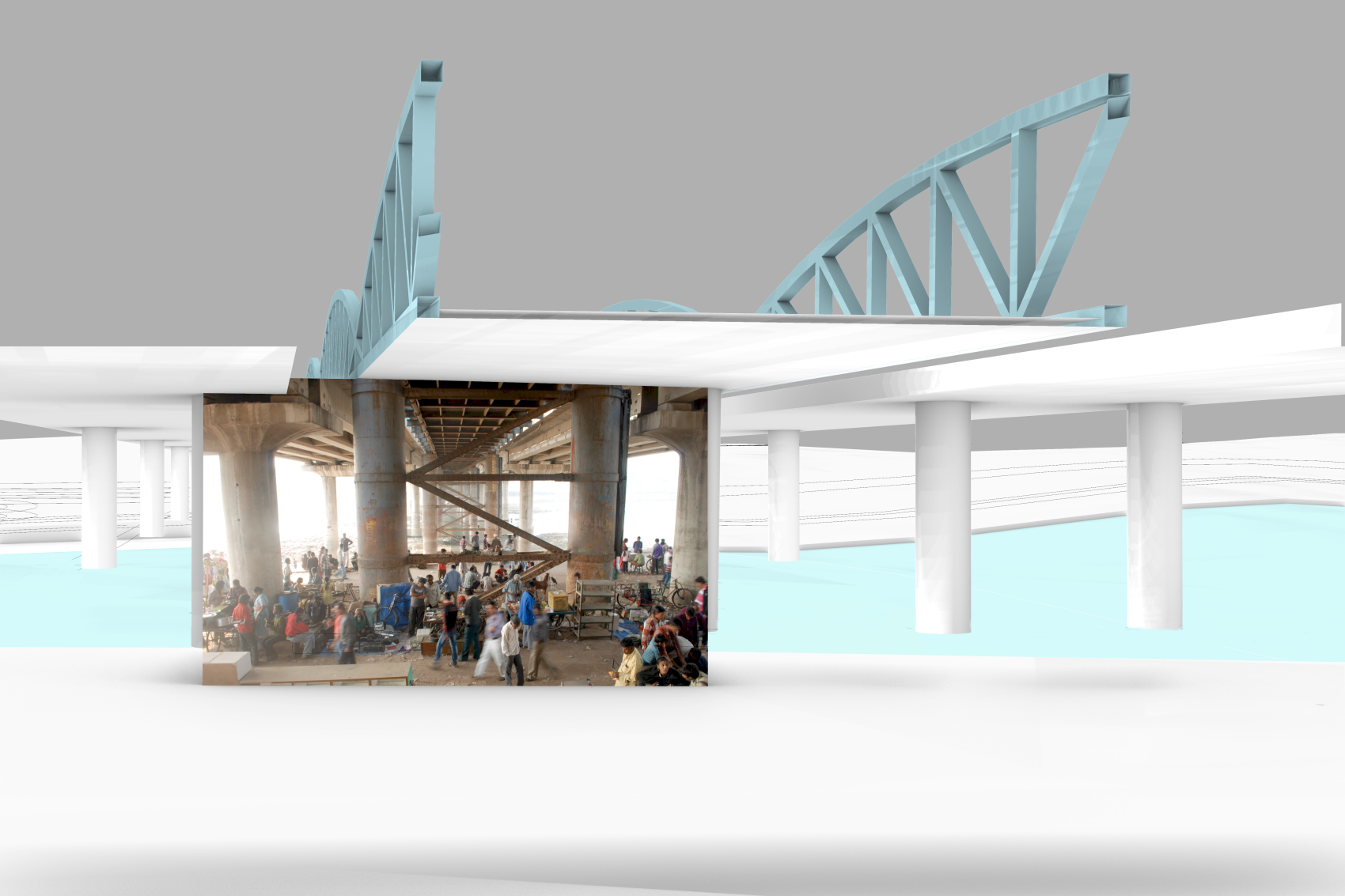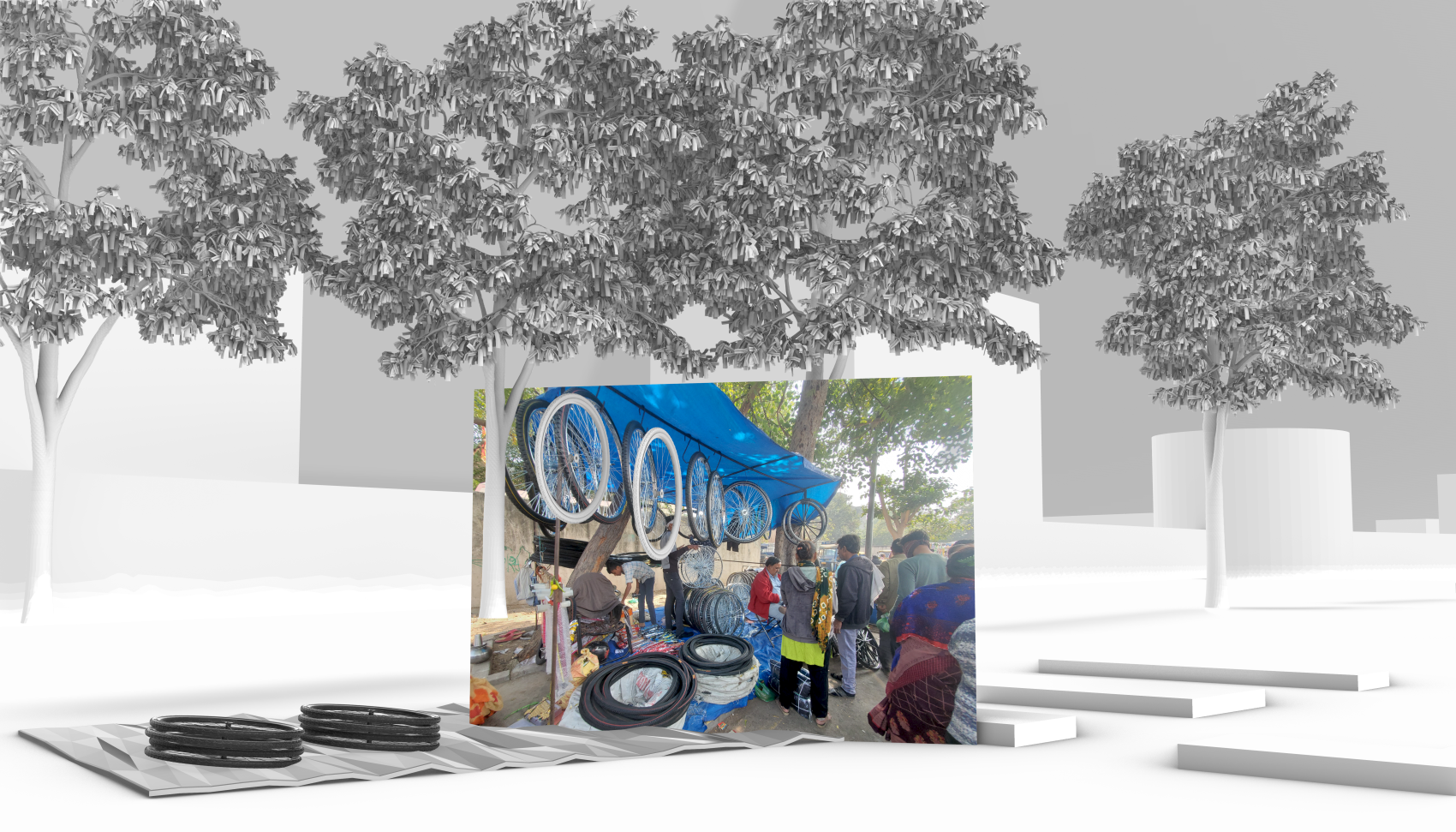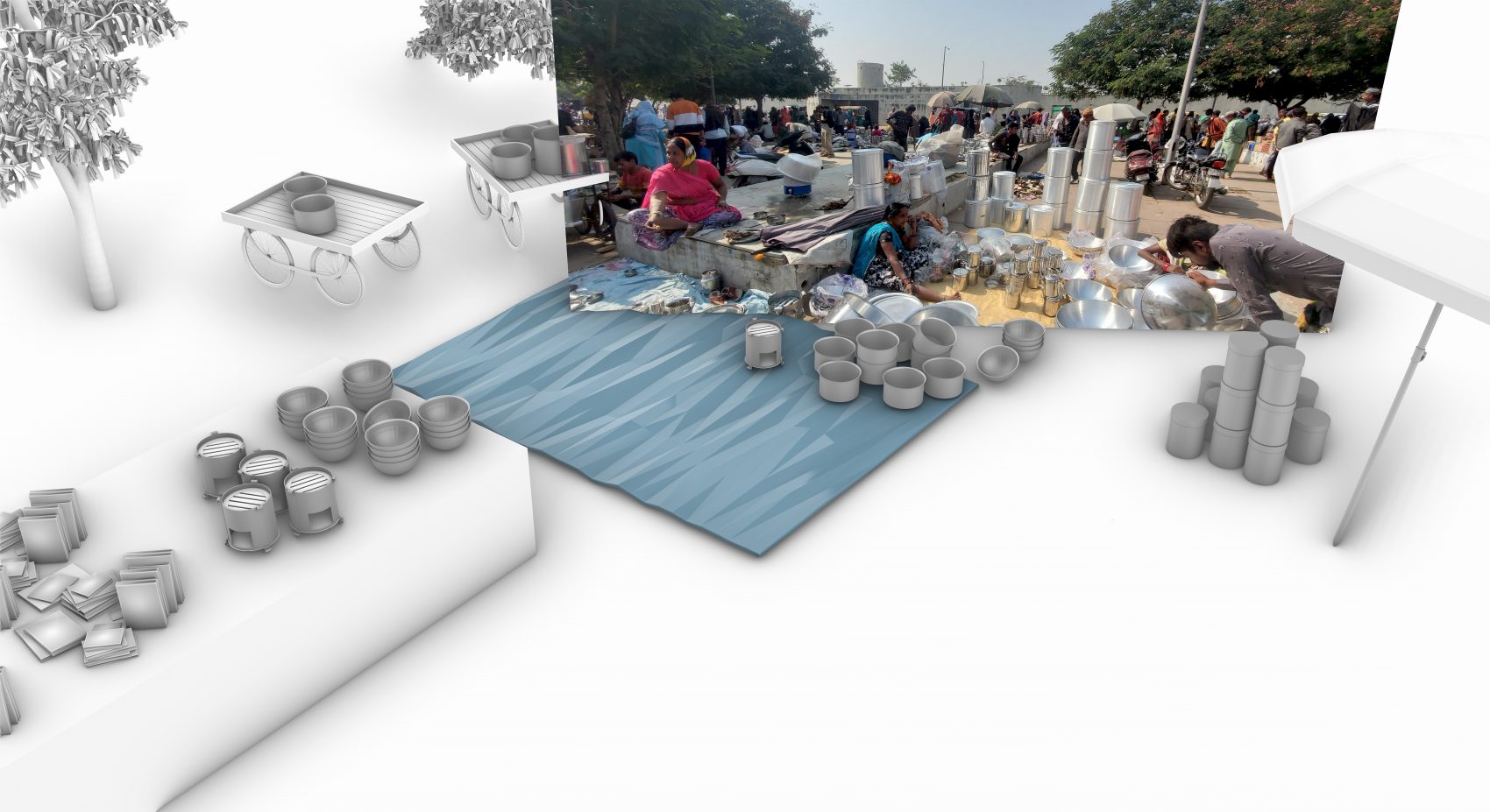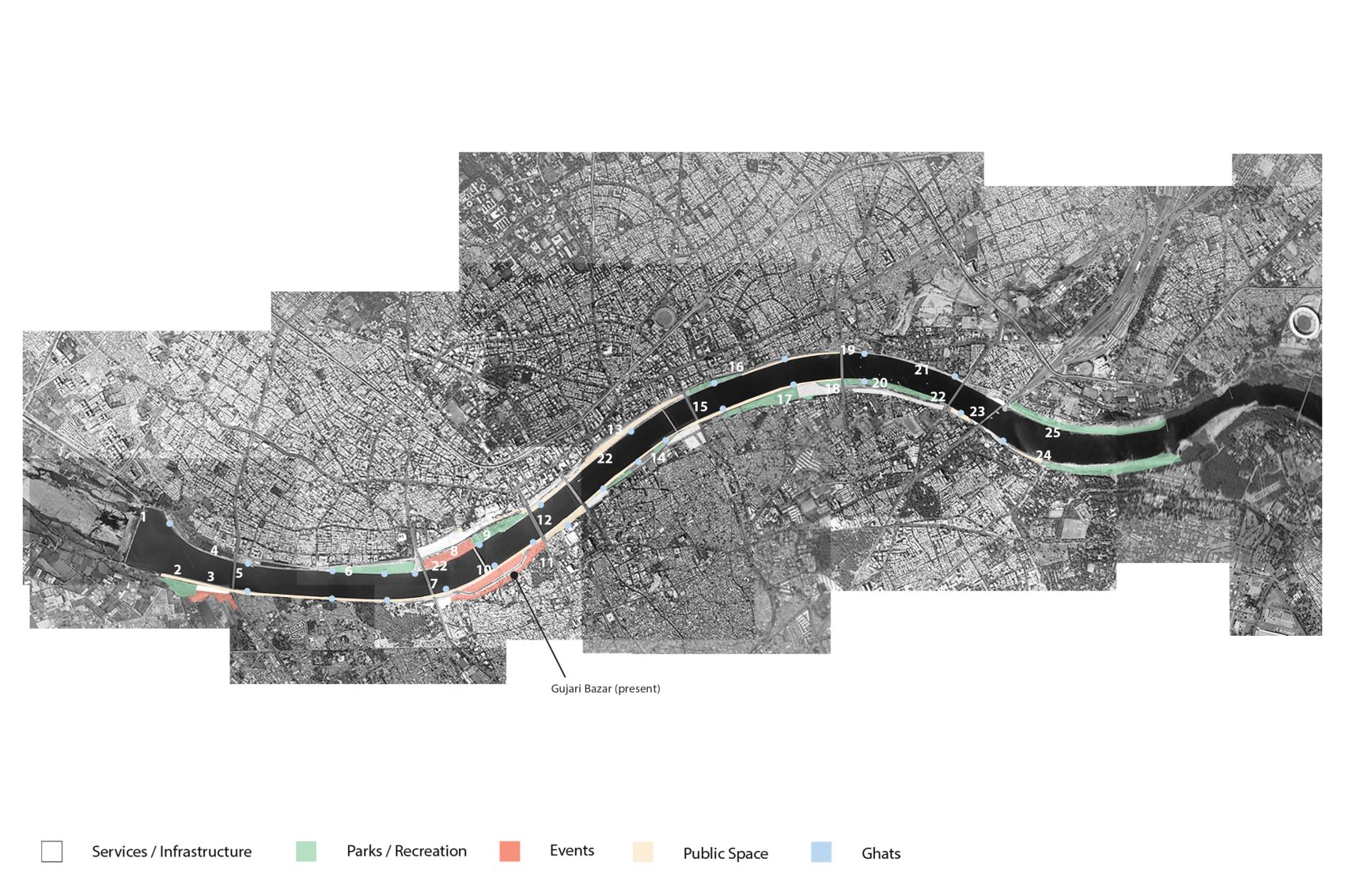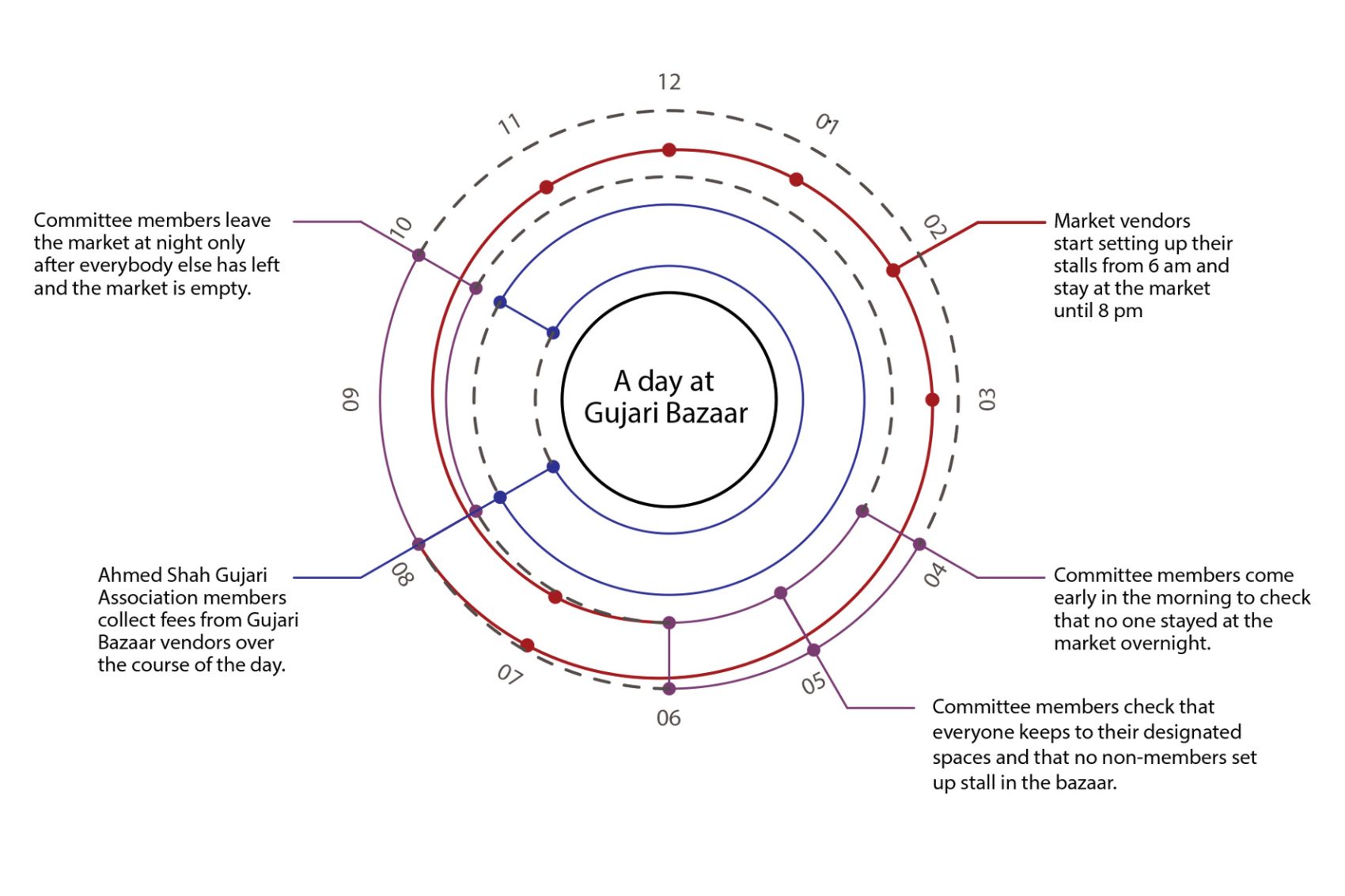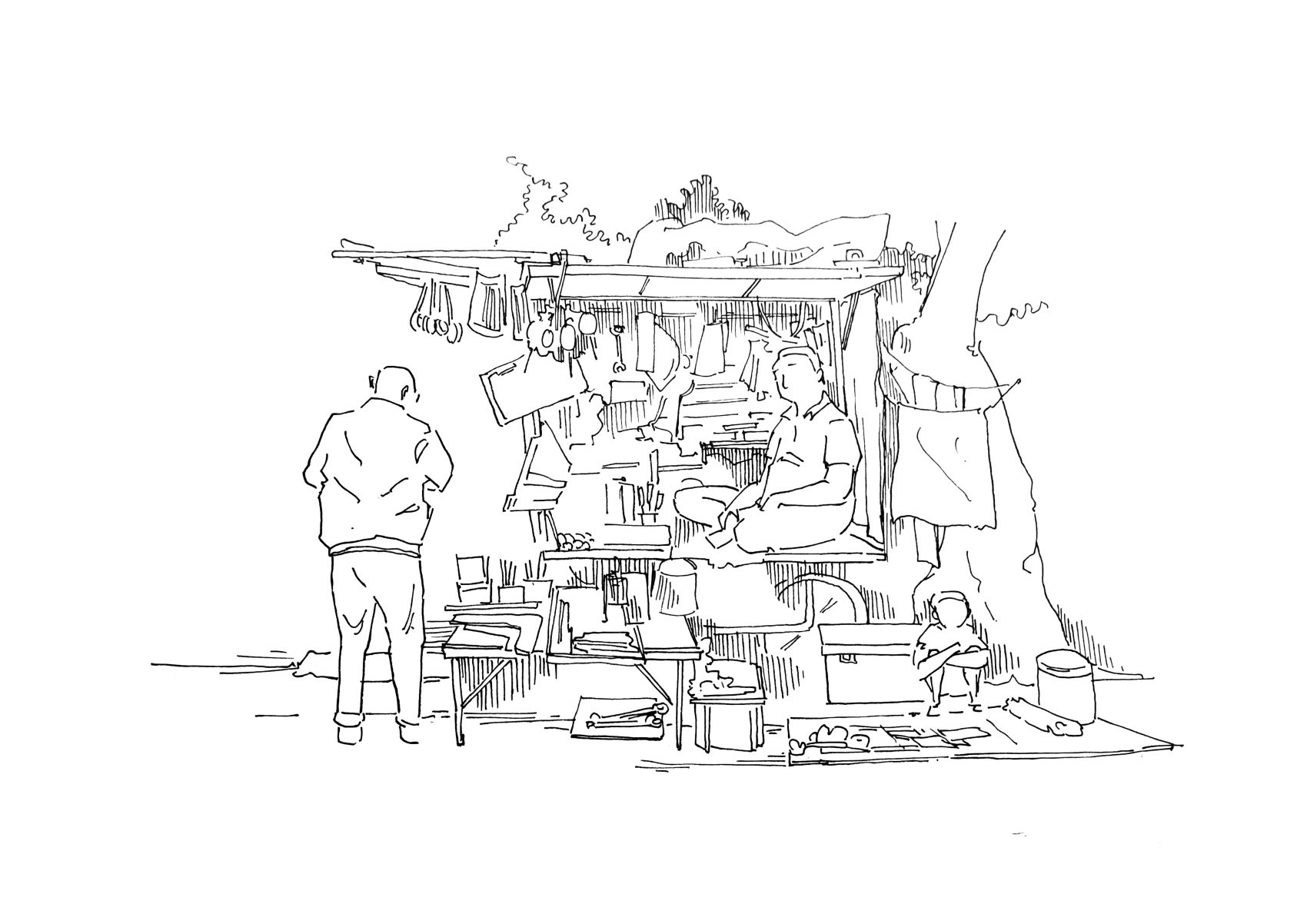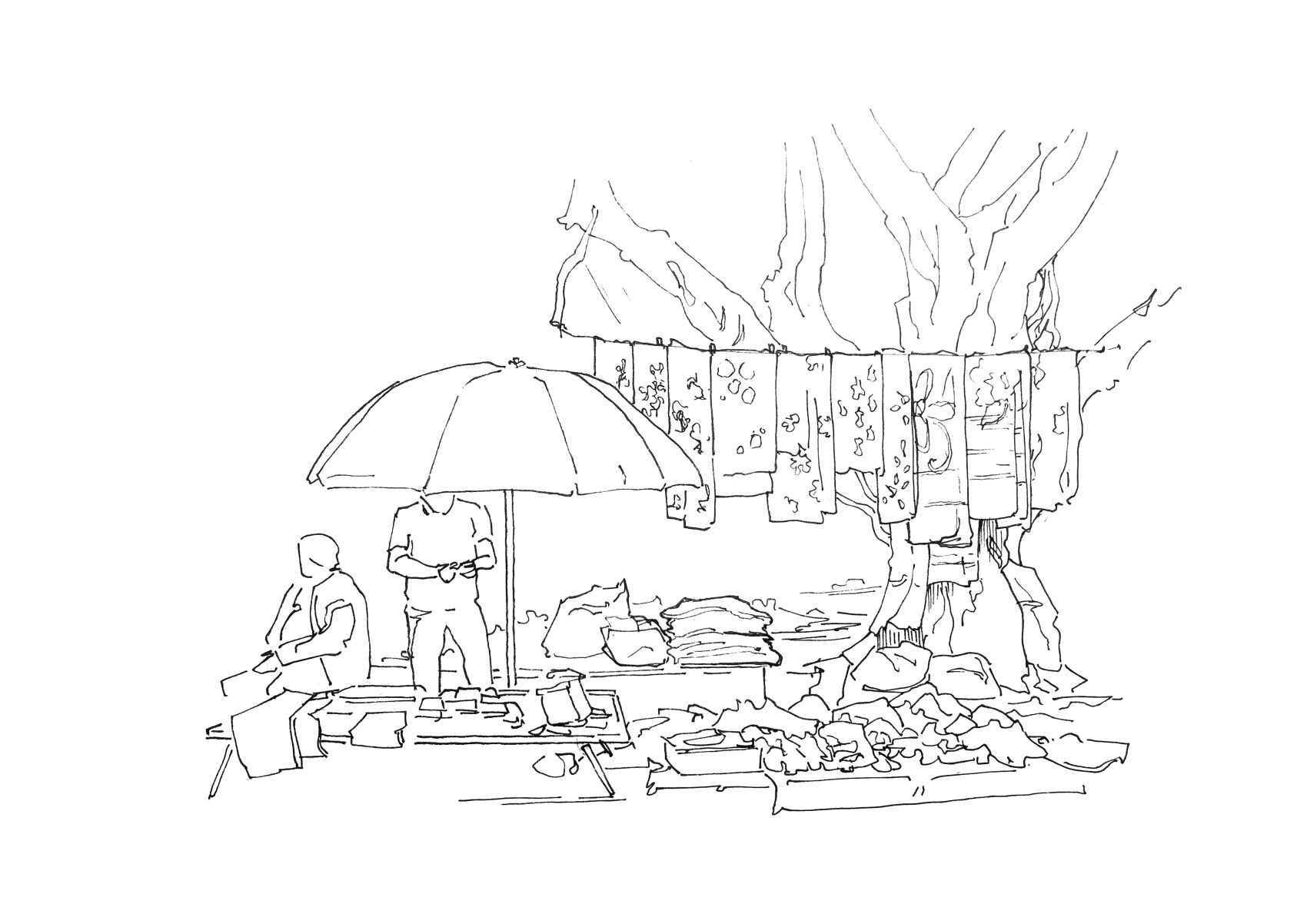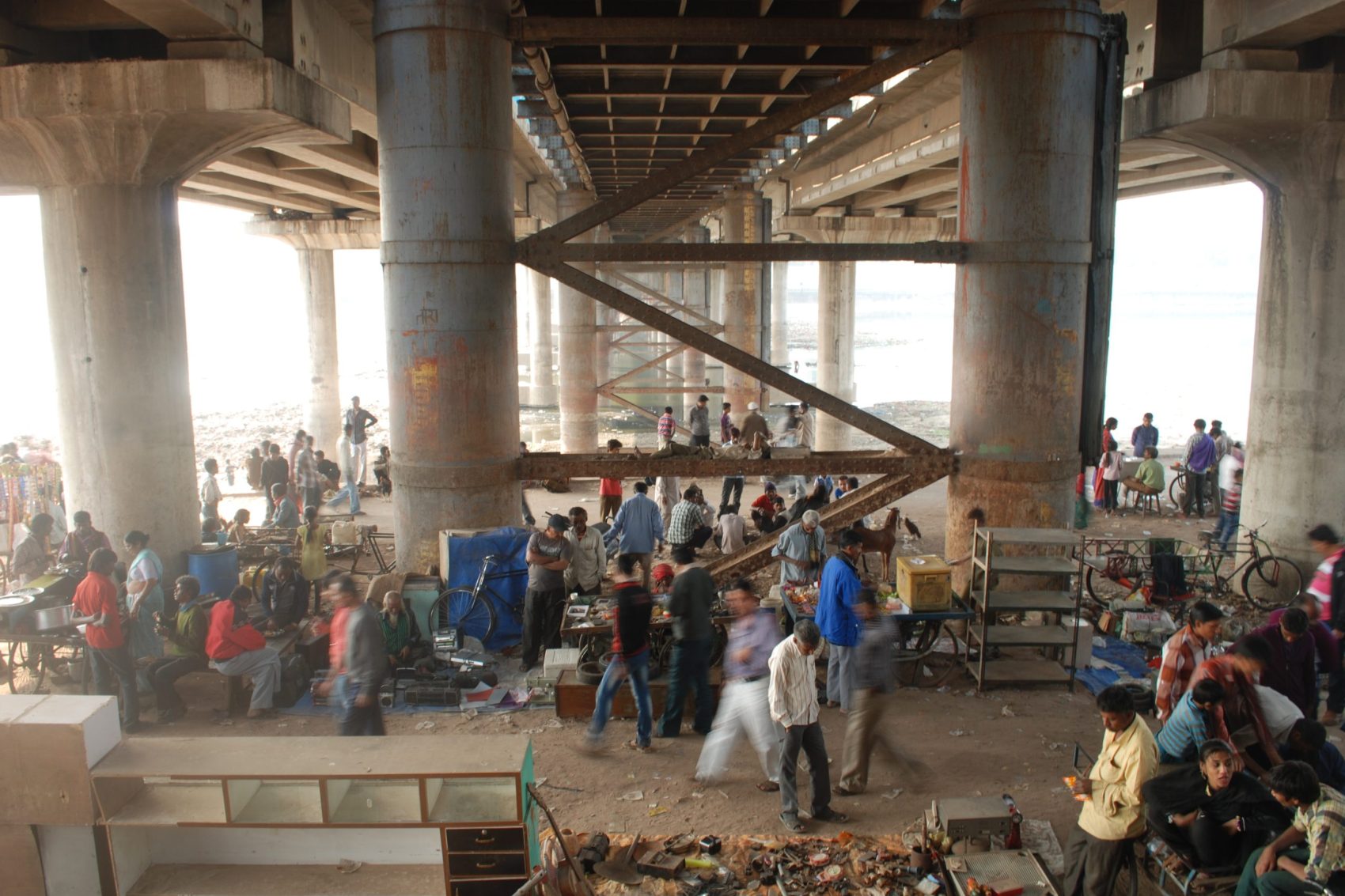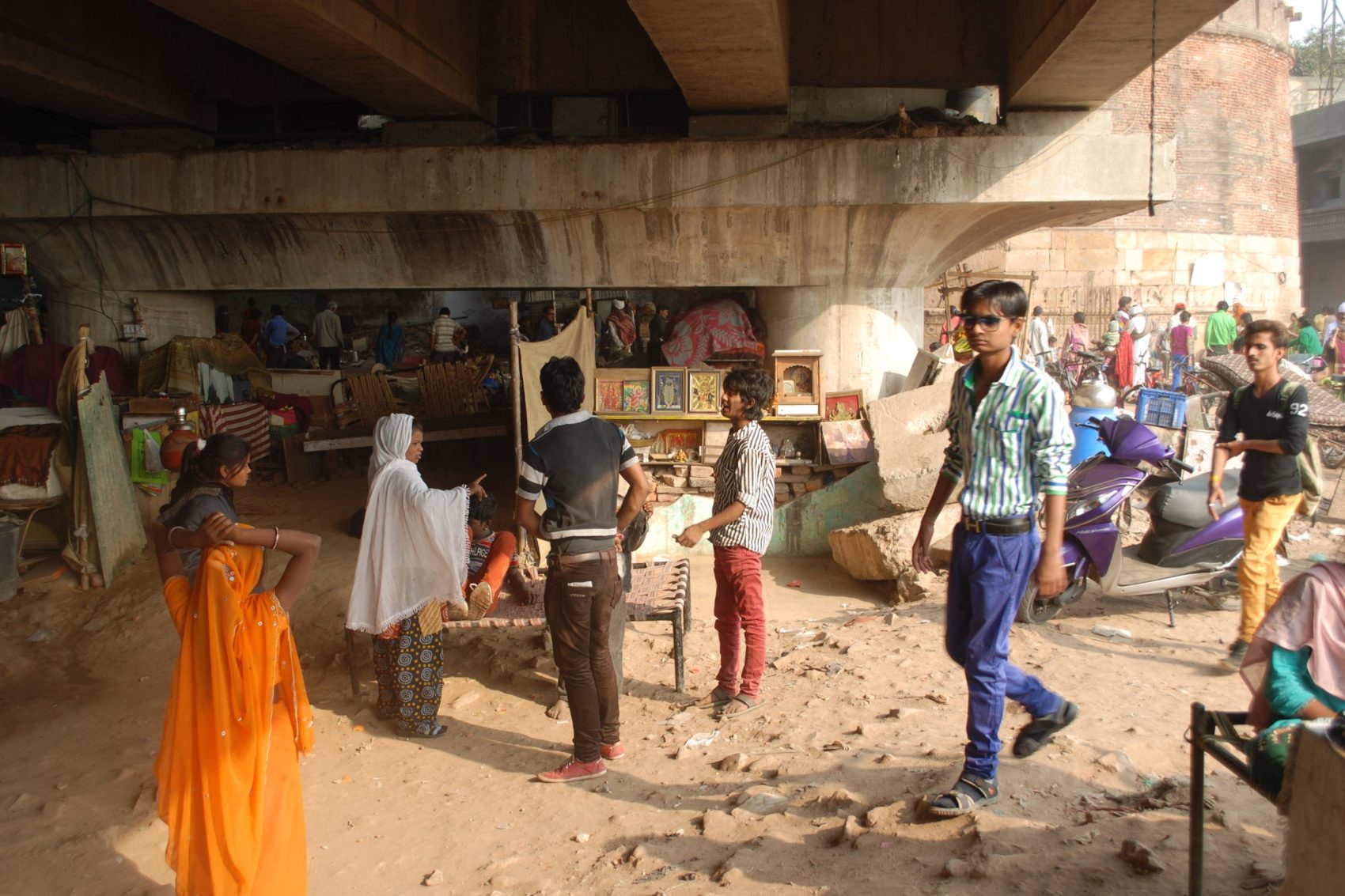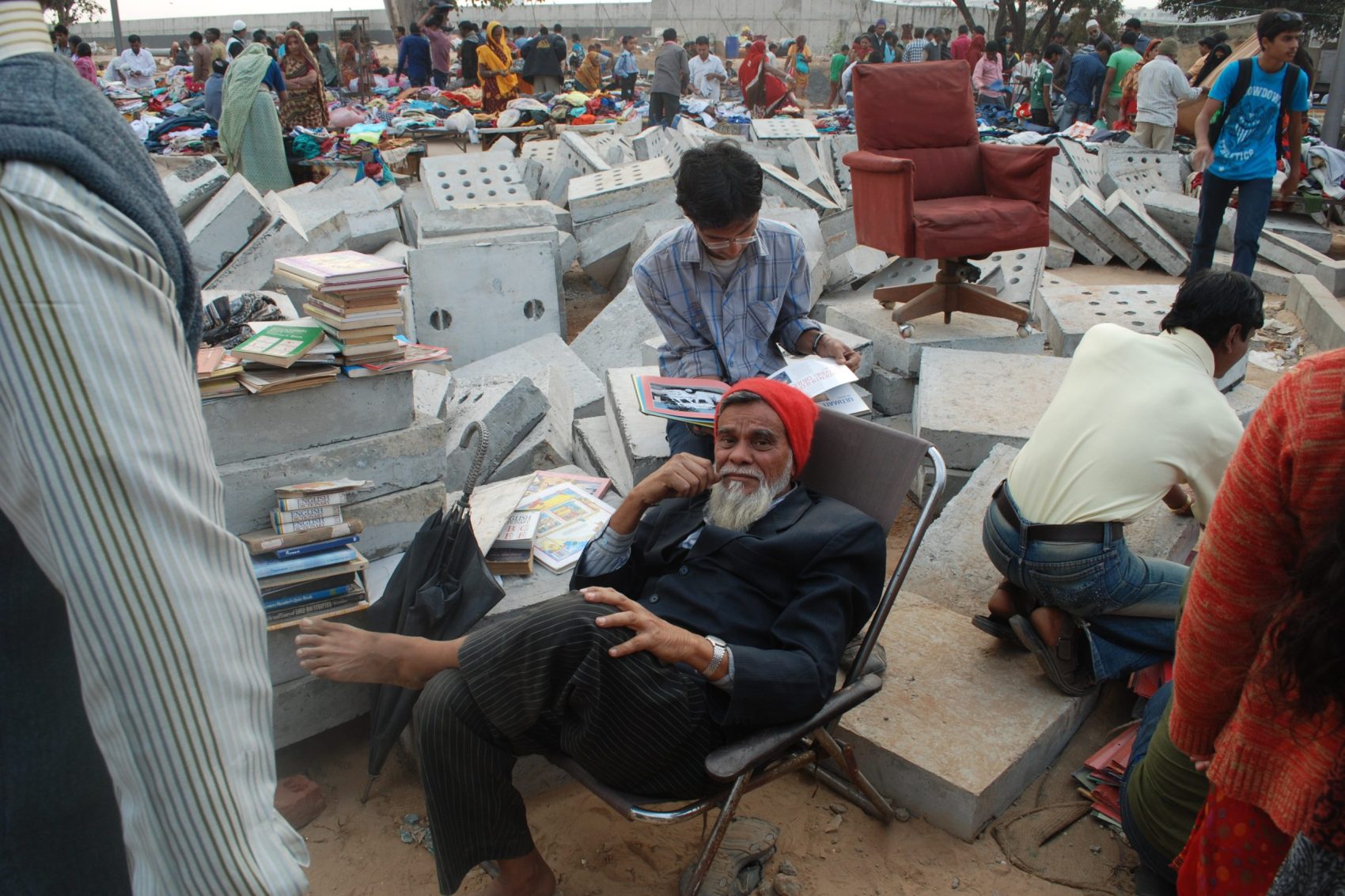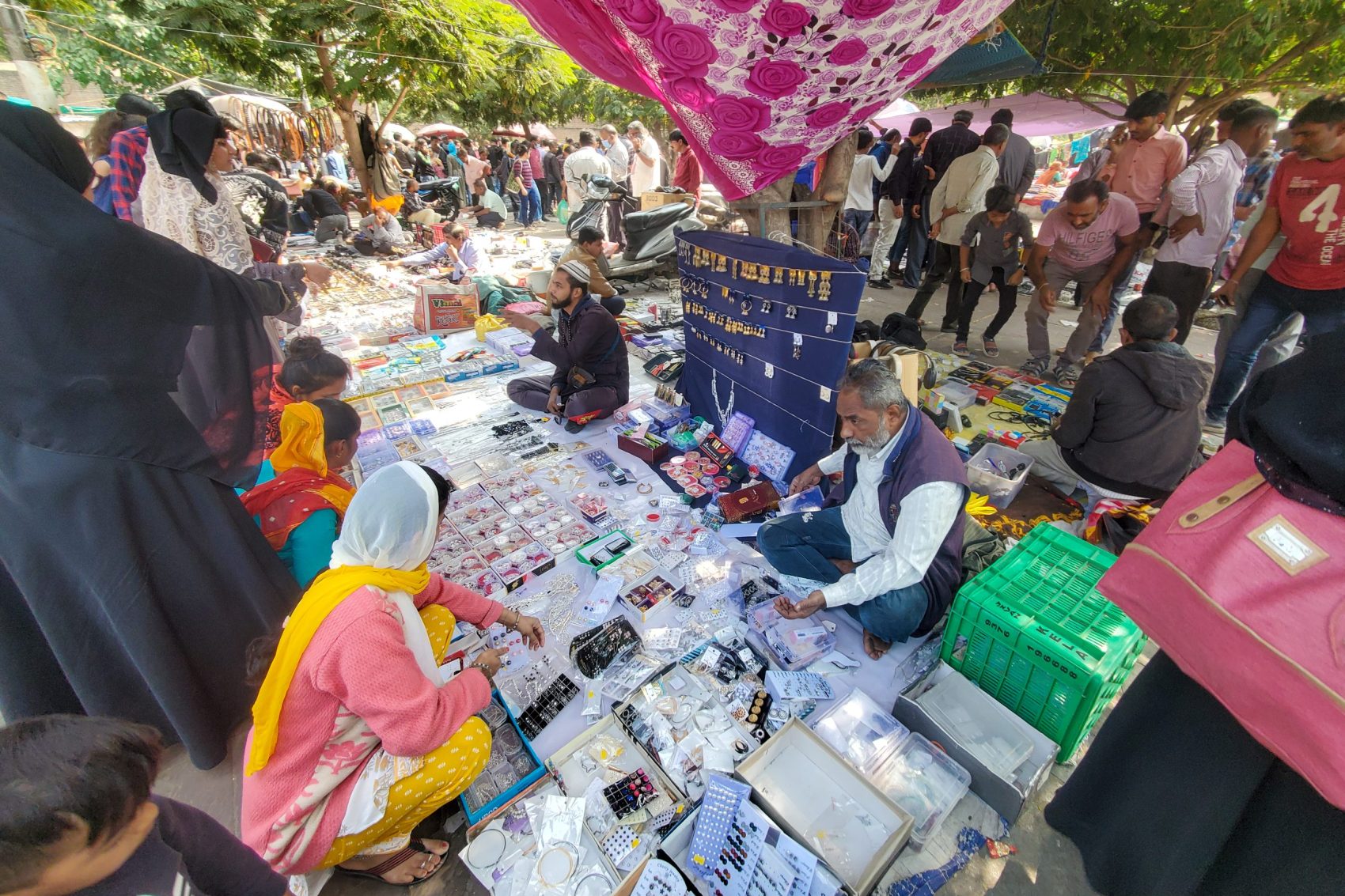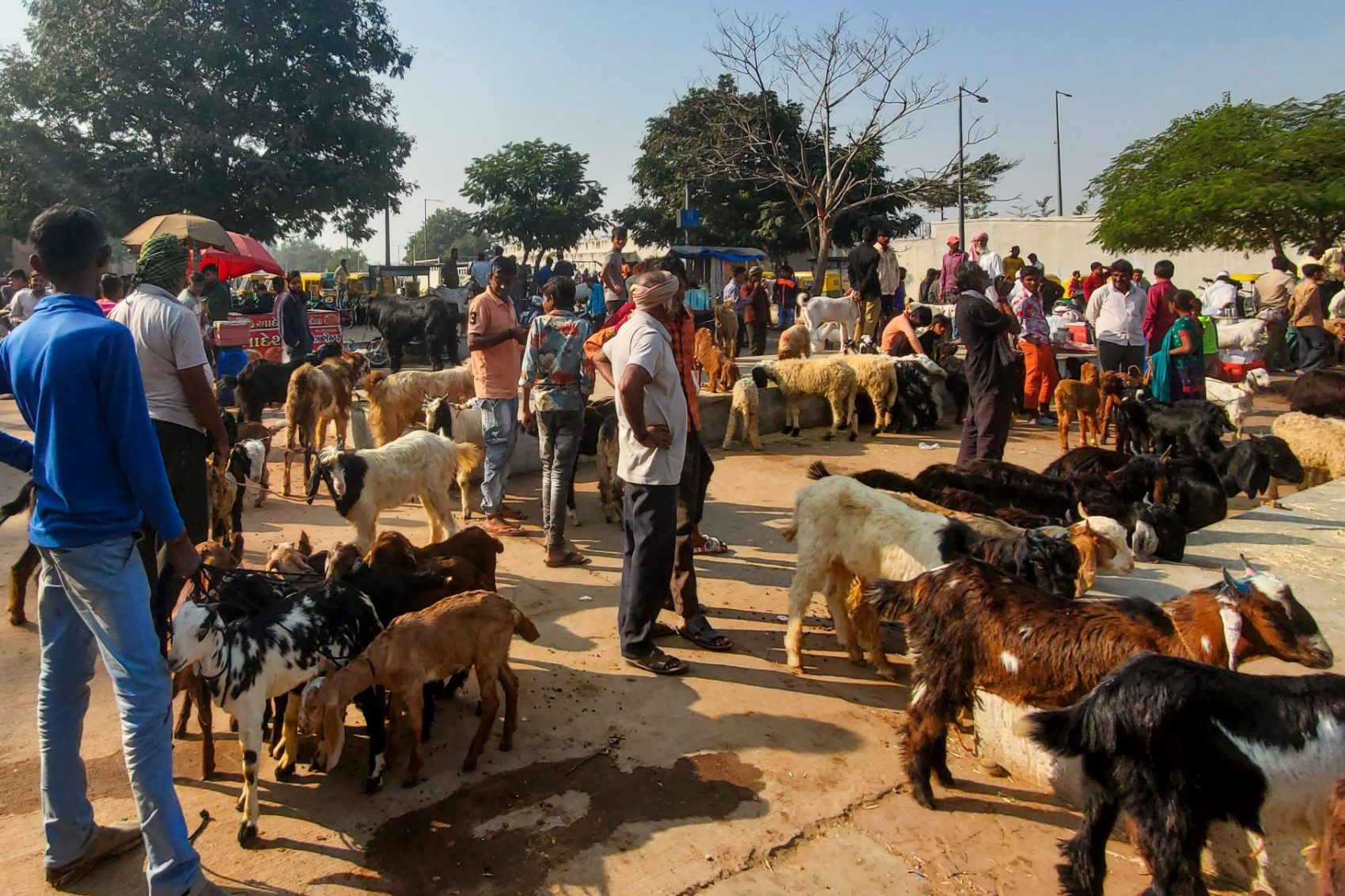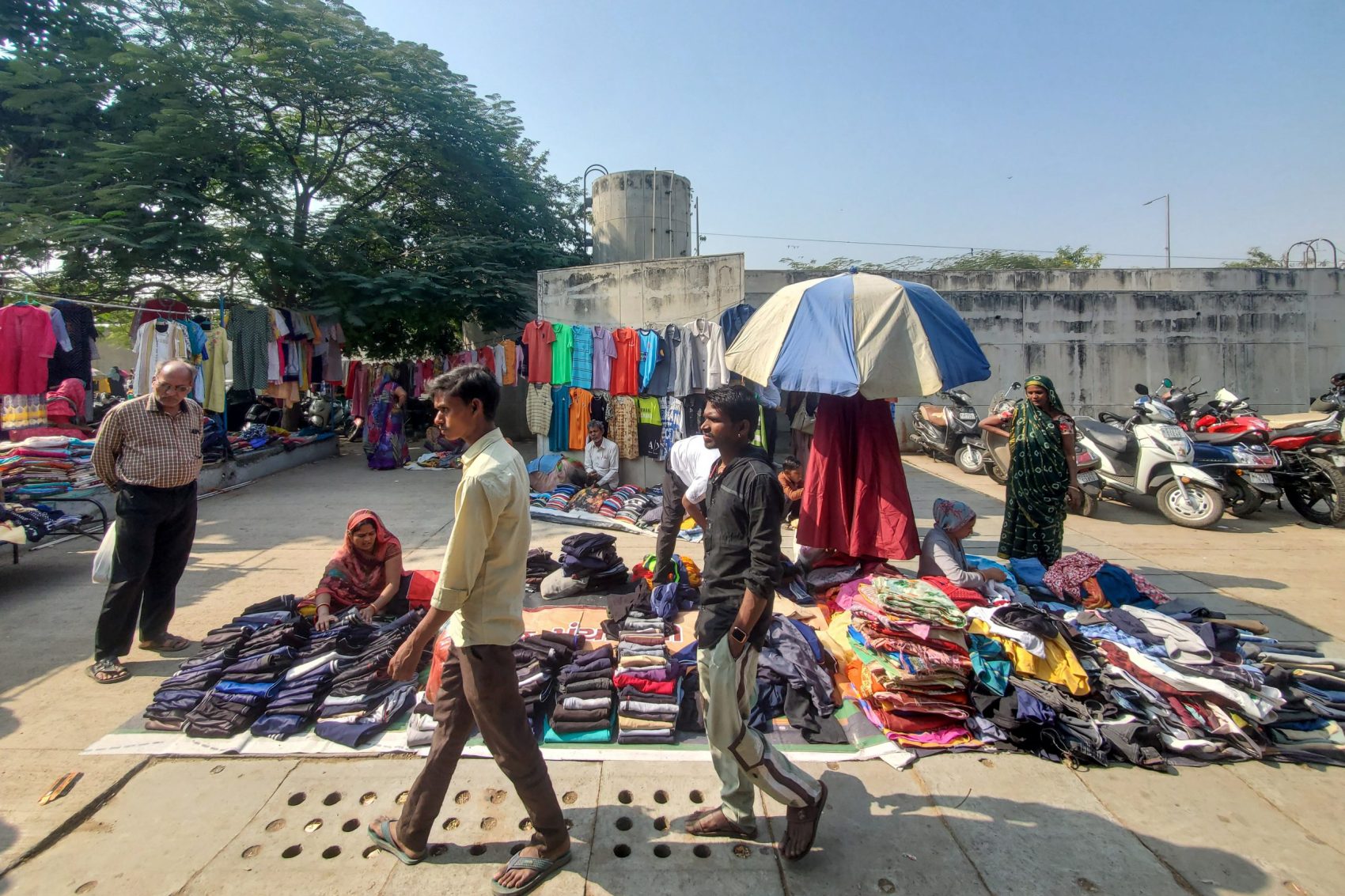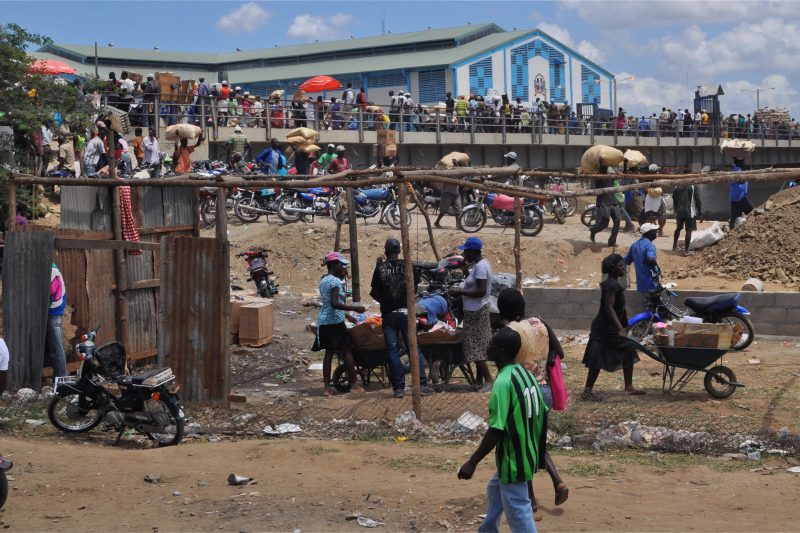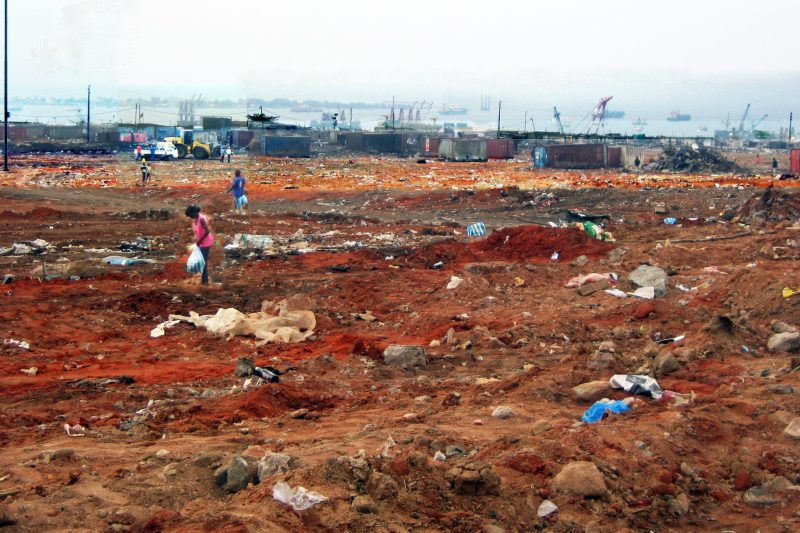- Relocation
- FWF
- 2018-2023
- Incorporating Informality
Fallstudie: Gujari Bazaar
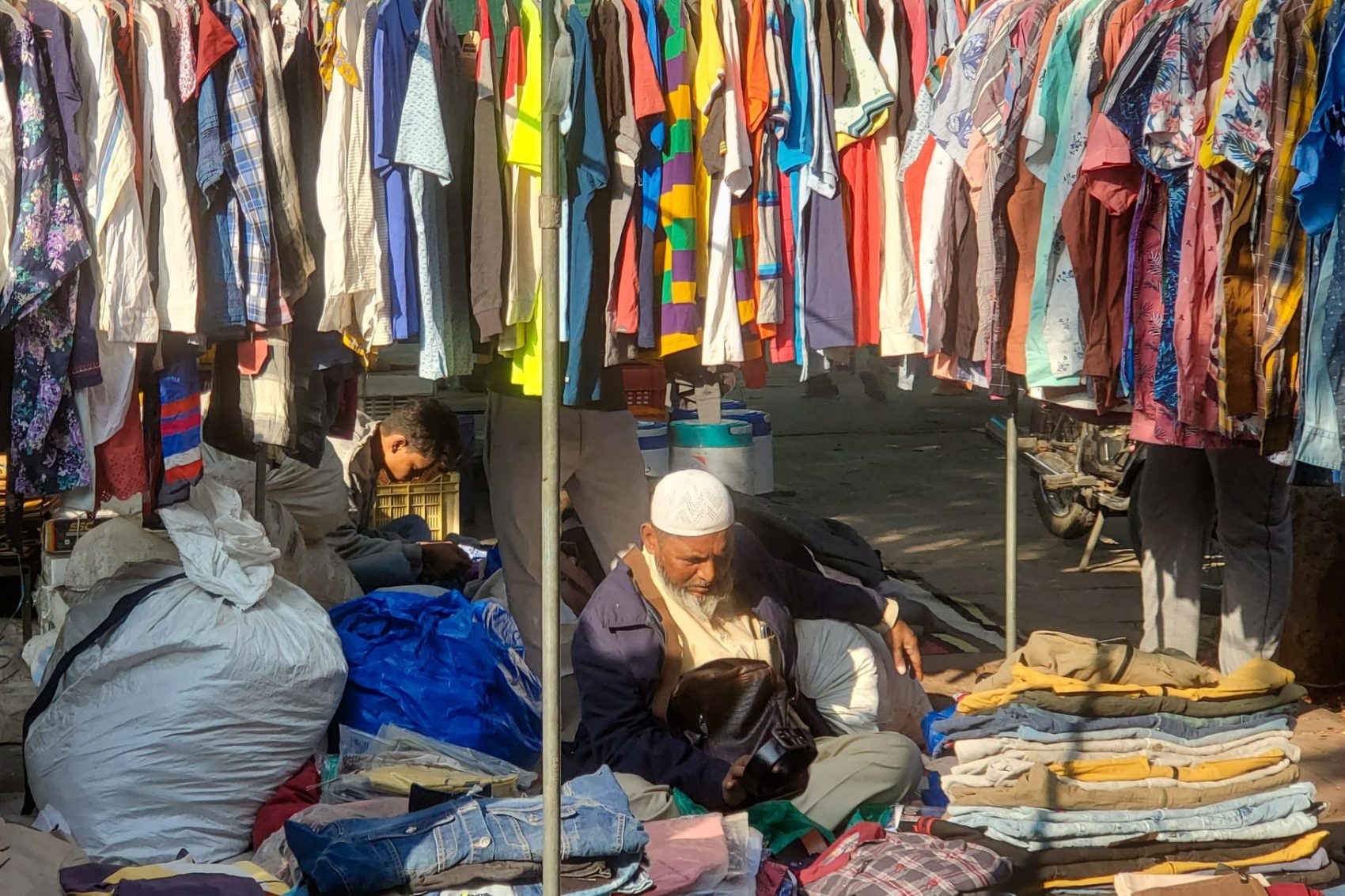
Gujari Bazaar, Ahmedabad, 2022
AHMEDABAD’S RIVERFRONT MARKET
Amongst the most iconic images of Ahmedabad are scenes composing life along the Sabarmati River, which winds its way through the heart of the city, much like the Thames River does in London, twisting and bending, dividing the city into two contentious halves. Since its inception in 1414 C.E., three years after the foundation of Ahmedabad by decree of Sultan Ahmed Shah, a Sunday market (Ravivari in Gujarati), also known popularly as Gujari Bazaar, occupied various sites close to the river, eventually being located along the banks of the river, spilling over onto the dry riverbed beneath one of the city’s essential bridges: Ellis Bridge, connecting the eastern and western halves of the city.
By 1947, when the market site was shifted to the riverbank near Ellis Bridge from its previous location near the old city’s walls, the self-organised Gujari Bazaar grew to accommodate over one thousand vendors, supplying goods to an estimated 75 per cent of the city’s population. Although it converged on the site only once a week, its geographic network was vast, with its supply chain extending north and south of Ahmedabad city.
In 2011, a new market site proposal was devised in conjunction with a riverfront development initiative. The work was contracted to the Environmental Planning Collaborative (EPC), a local firm headed by architect Bimal Patel. EPC developed earlier proposals and added a four to six-lane road parallel to the river. This meant that all the activities located on the river and its bed would have to be moved behind this road, causing general insecurity amongst the occupants of the riverfront.
This new site is spread over 70,000 square metres within the riverfront development plan and provides space for 1600 vendors on 778 raised platforms and 783 pitches. Parking is available for 280 two-wheelers, 425 four-wheelers and eight heavy vehicles. Lights, toilets, food courts, drinking water and seated areas are also provided, and more than eight hundred trees have been planted around the raised platforms to give shade to the vendors and their customers. These raised platforms, with their orderly arrangements and the enclosure of the new market area, are the physical devices of formalisation. Symbolically, the enclosure signifies the complete transformation of the riverfront from an infrastructural commons to a privatised zone.
Location(s): Ahmedabad, INDIA
On-Site Collaborators:VYJAYANTHI V. RAO and SIMPREET SINGH
Visualisations: BILAL ALAMELOVRO KONCAR-GAMULINJOANNA ZABIELSKA
Photography:
VINEET DIWADKAR
DIPESH PRAJAPATI
Results of this case study were published in:
Ahmad Shah Gujari Association (AGA), the market’s governing body, has formed in conjunction with these developments to engage regulating and policing functions to ensure that the new market is not overrun and disorderly in appearance and in substance. The AGA has a list of nineteen rules that govern the business. These include prohibition of the auction and bidding on the products inside the market, selling or trading of animals/birds that are prohibited under Indian law, subletting of vending space, and the sale of anything that is in contravention of the rules and laws of the land. The AGA has a total of thirty-five staff members, including security guards and the committee. They regulate an area of 35,000 square metres, including public amenities like toilet blocks and parking areas.
Gujari Bazaar’s multiple spatial iterations portray a post-colonial landscape that continues to evolve, transgress and resist its homogenisation. Reflecting on the question of how space maintains its cultural distinctiveness, despite these attempts to redirect its experience, it is found that ultimately, the openness of markets as sites of exchange to new and unfamiliar experiences – whether it is the use of raised platforms to stage one’s goods or the openness to the mediation of online platforms – enable the Gujari Bazaar to remain distinctive as it changes and to reflect its function as a symptom of the interests that shape urban life.
CONTRIBUTOR(S)
Vyjayanthi V. Rao is an anthropologist, writer and curator focusing on displacement, memory, material cultures and imaginaries of the future, with a particular interest in speculative practices in contemporary social life.
Simpreet Singh is an Indian activist who since quitting his career as a successful engineer, has worked relentlessly on exposing housing scams and corruption in the city of Mumbai, where slum-dwellers are being evicted, in many cases unfairly, to make way for upmarket developments.
